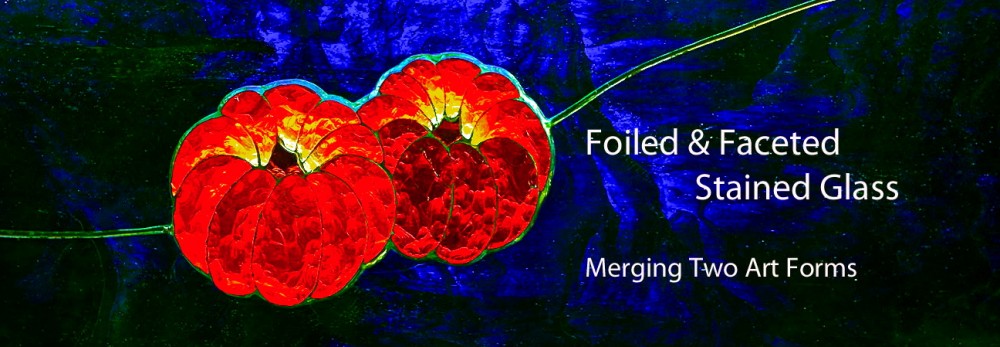The decisions concerning the choice of the colors to be used in a panel are quite complex and also very personal in nature. I am not qualified to discuss the complex issues involved in color choice with any authority but I will note some of what I have observed over the years. The questions concerning the selection of colors for any stained glass work, especially if it is displayed in a window, are somewhat different than those pertaining to, for example, a painting. A painting is seen in reflected light which tends to be fairly constant over time but a window displayed stained glass work is seen primarily in transmitted light where the angle, intensity and color temperature of the light is continuously changing. This tends to be even more significant when using faceted glass. One of the most fascinating but rather difficult aspects of working with stained glass for me is anticipating how the colors will change in relationship to each other in response to the continuous change in the nature of the transmitted light. The faceted glass due to its multiple reflecting and refracting surfaces may behave quite differently than sheet glass which often makes the faceted glass stand out against the background both in direct sunlight and also sometimes, depending on the colors of the glass, at dawn or dusk. Since I have always had difficulty visualizing how the finished panel will respond to the changing conditions I have recently begun, when I am initially choosing the glass, to attach representative samples, of both background and faceted glass to a piece of clear plexiglass which I then hang in a window. This allows me to watch the different pieces of glass over several days giving me a better sense of how the different colors will interact in the finished work.
I have tried many of the available dalle colors and, as you will notice from the gallery, I am drawn to the red – orange – yellow end of the spectrum. I have found them to be quite brilliant in direct sunlight and they also tend to hold the light, almost glow, in the low light levels present at dawn and dusk. This effect is partly due to the shift of the sunlight towards the red end of the spectrum as a result of the diffraction of the light when the sun is near the horizon.
The choices available for the background glass are virtually endless. I generally like fairly dense colors in the green – blue – violet spectrum which are the complementary to the red, orange and yellow that I tend to favor in my faceted glass. Another option is to use one of the many kinds of clear textured glass for the background such as those used in Bird of Paradise #1 and Humming bird #2.

